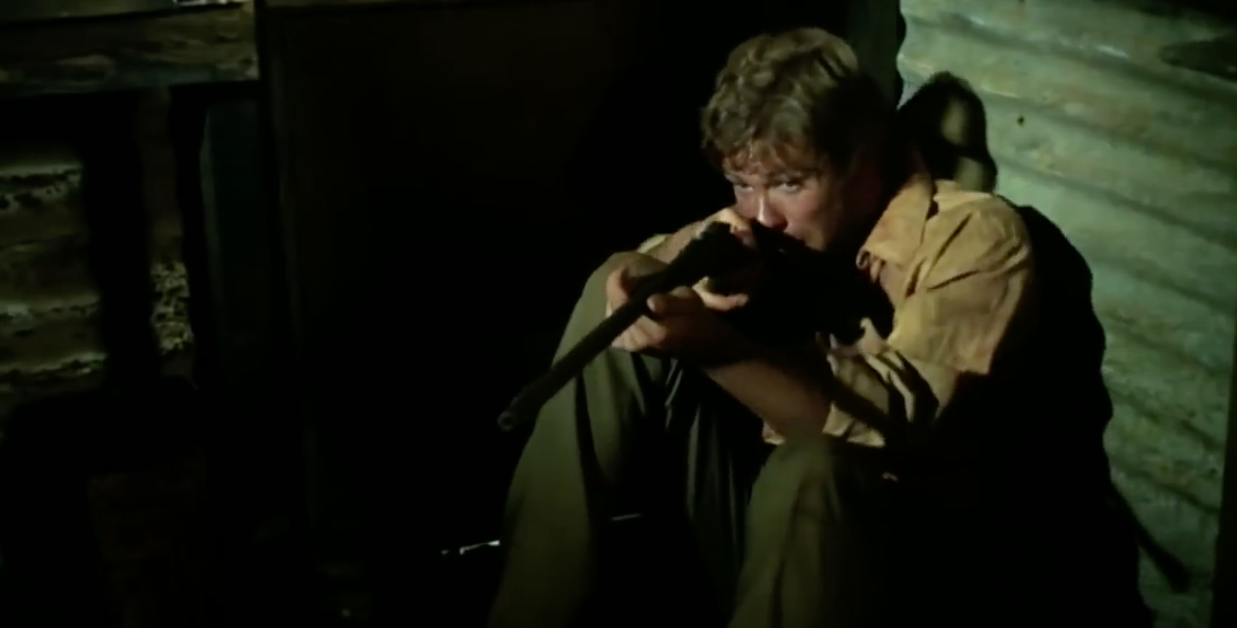It is not entirely unusual for a film’s original print to get lost in the processes of history. In actual fact, they estimate that just over 75% of U.S. silent films are forever lost, and while those that still stand today exist as both historical records and early indicators of how cinema as a new medium was taking shape, one cannot help but lament the masterpieces of the silent era undoubtedly lost. Fortunately, to the sheer delight of cinephiles the world over, some classics that appear to have fallen victim to time can dramatically resurface, much like Bulgarian-Canadian director Tod Kotcheff’s Australian 1971 psychological thriller Wake in Fright.
While Kotcheff, as a director, is known mainly for his work on the comedy and action genres, having respectively directed films like Fun with Dick and Jane and First Blood, the latter of which is the first ever film to feature Sylvester Stallone as the iconic John Rambo.
It is understandable, then, that such a résumé could easily overshadow a film like Wake in Fright, whose original cut was not only lost for a longstanding period, but is also an Australian production that performed poorly in its own domestic box office, never mind North America! However, time has ironically been kind to Wake in Fright, as it gained a cult following during the ‘90s not just because of its allusiveness, but also in recognition of its cinematic accomplishments, which had a profound effect upon the Australian New Wave. Make no mistake, for those interested in the horror or thriller genres, I believe this is absolute essential viewing.
Adapted by playwright and poet Evan Jones from the 1961 novel of the same name, Wake in Fright very much reminded me of a more grounded iteration of Samuel Beckett’s play Waiting for Godot, in that the filmmakers convey a great deal from a series of understatedly random and inconsequential events, although they are anything but. Every aspect of the production contributes to the film’s overall artistic achievements, most obviously its direction and performances. However, its music, cinematography and editing deserve equal credit for the palpably tense atmosphere that is seemingly created out of thin air through most of its runtime.
In fact, simply put, Wake in Fright is one of the most unsettling films I have ever seen. After watching it, I experienced a sense of disturbance that I found difficult to shake off. It is proof that to make a truly disquieting film, one capable of getting under your skin, you don’t necessarily need an ominous, seemingly indestructible murderer with a wardrobe gimmick…or even a murderer, for that matter.
What separates this film from other classics like The Exorcist, Halloween, The Shining, The Omen, and other similarly renowned works, is that there are no (human) deaths, no clearly identifiable villain, or any supernatural elements at play. It is just a seamless cascade of encounters that plummet a seemingly normal and grounded (albeit, alcoholic) school teacher into an existence of moral degradation while in an Australian outback community. The fact it is so grounded is what makes it so unsettling, somewhat like Deliverance, but without the overt exploitation and human-on-human violence. Instead, it puts man’s basest impulses on full display, and we can only watch in discomfort as lead character John Grant (Gary Bond) submits to them in a downward spiral fueled by sex, brutality, and lots of alcohol.
While I reserve high praise for Wake in Fright, this certainly does not mean it is for everyone. There are two sequences of kangaroo hunting that use footage from an actual hunt, which undoubtedly makes for the most difficult viewing in the entire film. While I mention this as an initial disclaimer for the faint-hearted, I also use this opportunity to state that I firmly believe the manner in which it is shot is justifiable from the perspective of its filmmakers. This is even in spite of my initial disgust at the scenes, which was intensified by my knowledge of cinema’s past tendencies for unbridled animal cruelty.
The footage is as unedited as it is unflinching, but its cinematic ambitions are as principled as its conservational intentions. This is because on the one hand it serves as an effective turning-point in John Grant’s thematic and narrative arcs, while on the other it is an eye-opening depiction of the cruel practice of Kangaroo hunting.
Filmmakers accompanied a group of licensed hunters, who were going to carry out these actions with or without the cameras rolling. Therefore, the filmmakers were there, firstly, to gain the required footage for the film, which admittedly could have been done with the magic of effects and editing, but then wider awareness would not have been drawn to the brutal dangers posed by humans to the kangaroo population. The photography even makes strides to draw parallels between the humans and kangaroos for further impact. No doubt others will differ in opinion, and I can understand why given my own initial shock from the scenes, but I also understand the ultimate intentions of Kotcheff, who himself is a professed vegetarian.
All in all, Wake in Fright is a very unique thriller, to the point where I can confidently say I have not seen anything quite like it, making its restoration all the more indispensable. It draws its thrills and chills from a very human place, one that toys with our own innate sense for tone and atmosphere. Many of the events that occur are nowhere near being worthy of news headlines, and yet the way it is executed leaves a resonating sense of discomfort, like addressing inherent flaws you would rather not consciously acknowledge. For these reasons, Wake in Fright deserves its cult classic status, and should be a wellspring of influence not just for Australian cinema, but cinema the world over.

